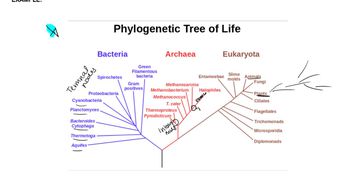Evaluate the following pedigree, and answer the questions below for individual IV-1. What is F for this individual?
Table of contents
- 1. Introduction to Genetics51m
- 2. Mendel's Laws of Inheritance3h 37m
- 3. Extensions to Mendelian Inheritance2h 41m
- 4. Genetic Mapping and Linkage2h 28m
- 5. Genetics of Bacteria and Viruses1h 21m
- 6. Chromosomal Variation1h 48m
- 7. DNA and Chromosome Structure56m
- 8. DNA Replication1h 10m
- 9. Mitosis and Meiosis1h 34m
- 10. Transcription1h 0m
- 11. Translation58m
- 12. Gene Regulation in Prokaryotes1h 19m
- 13. Gene Regulation in Eukaryotes44m
- 14. Genetic Control of Development44m
- 15. Genomes and Genomics1h 50m
- 16. Transposable Elements47m
- 17. Mutation, Repair, and Recombination1h 6m
- 18. Molecular Genetic Tools19m
- 19. Cancer Genetics29m
- 20. Quantitative Genetics1h 26m
- 21. Population Genetics50m
- 22. Evolutionary Genetics29m
21. Population Genetics
Allelic Frequency Changes
Problem 35
Textbook Question
The following is a partial pedigree of the British royal family. The family contains several inbred individuals and a number of inbreeding pathways. Carefully evaluate the pedigree, and identify the pathways and common ancestors that produce inbred individuals A (Alice in generation IV), B (George VI in generation VI), and C (Charles in generation VIII).

 Verified step by step guidance
Verified step by step guidance1
Step 1: Begin by identifying the inbred individuals in the pedigree: Alice (generation IV), George VI (generation VI), and Charles (generation VIII). Inbreeding occurs when an individual inherits alleles from ancestors who are related, leading to shared genetic pathways.
Step 2: For Alice (generation IV), trace her ancestry to find common ancestors. Alice's parents are Albert and Victoria, who are first cousins. Their shared common ancestors are George III and Charlotte, making Alice inbred due to this pathway.
Step 3: For George VI (generation VI), examine his parents, George V and Mary of Teck. Mary of Teck is a descendant of George III and Charlotte, and George V is also a descendant of George III and Charlotte. This shared ancestry creates an inbreeding pathway for George VI.
Step 4: For Charles (generation VIII), analyze his parents, Elizabeth II and Philip. Elizabeth II is a descendant of George III and Charlotte, while Philip is also a descendant of George III and Charlotte through a different lineage. This shared ancestry results in inbreeding for Charles.
Step 5: Summarize the inbreeding pathways: Alice's inbreeding is due to her parents being first cousins, George VI's inbreeding arises from shared ancestry between his parents, and Charles's inbreeding is due to shared ancestry between his parents. The common ancestors for all three individuals are George III and Charlotte.
 Verified video answer for a similar problem:
Verified video answer for a similar problem:This video solution was recommended by our tutors as helpful for the problem above
Video duration:
2mPlay a video:
Was this helpful?
Key Concepts
Here are the essential concepts you must grasp in order to answer the question correctly.
Pedigree Analysis
Pedigree analysis is a method used to study the inheritance patterns of traits in families. It involves creating a diagram that represents family relationships and the transmission of genetic traits across generations. By analyzing the pedigree, one can identify carriers of specific traits, determine the likelihood of inheritance, and trace the lineage of individuals, which is crucial for understanding inbreeding and its effects.
Recommended video:
Guided course

Pedigree Flowchart
Inbreeding
Inbreeding refers to the mating of individuals who are closely related genetically, which can lead to an increased chance of offspring inheriting genetic disorders. Inbreeding can reduce genetic diversity and increase the expression of deleterious alleles. In the context of the pedigree, identifying inbred individuals involves tracing their ancestry to common ancestors, which can reveal potential health risks associated with inbreeding.
Recommended video:
Guided course

Non-Random Mating
Common Ancestors
Common ancestors are individuals from whom two or more descendants are directly descended. In pedigree analysis, identifying common ancestors is essential for understanding the genetic relationships between individuals, especially in cases of inbreeding. By pinpointing these ancestors, one can trace the pathways through which genetic traits are passed down, which is vital for evaluating the genetic health of inbred individuals in the royal family.
Recommended video:
Guided course

Phylogenetic Trees
Related Videos
Related Practice
Textbook Question
390
views


